| |
|
|
| |
Weekend Update
Thu 21st April, 2011
|
|
|
|
Weekend Update:
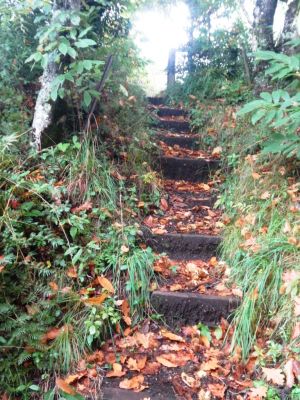
With the Easter weekend approaching the Tongariro is a bit like the weather at the moment..."changeable". Over the last few days we've experienced warm sunshine, prolonged rain and cold Southerly winds with showers.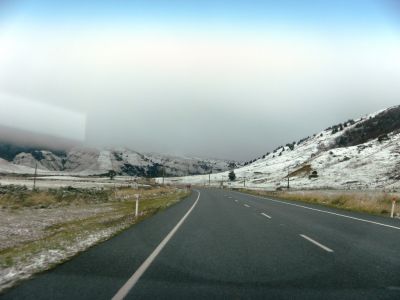 As I drove home across the Desert Road the outside temperature read zero degrees and there was light snow falling. As I drove home across the Desert Road the outside temperature read zero degrees and there was light snow falling.
The fishing and the fish were different every day and it paid to move around the river fairly quickly chopping and changing methods to suit.
I spent most of the time in the middle reaches although late Sunday afternoon I tried the Braids.
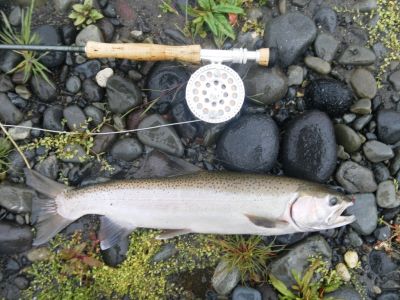
With just a tinge of color in the river more fresh rainbows shot through, this rounded off my best session for a long while, though I have to admit not all of them were stunning examples of Taupo trout. I ended the day with a real mixed bag of silver juveniles, tired jacks, skinny hens, a smallish brown from the grave-yard run on the TLB of of the remains of the Honey Pot and some good fish fresh from the lake.
I got up early the next day hoping to get a few more fresh run fish but once again they had vanished. It's still very unpredictable but a drop in temperature with some good rain to get the river level up would give things a bit of a kick-start.
 I had another good look around the Braids while I was there and Spot X especially is silting up much worse than I first thought. Less of the flow comes down this right by-pass nowadays and with the river still low you can clearly see that there is only a very narrow channel down the center free of silt. The fish hate this stuff, not only does it irritate their gills but it provides no cover for them which makes them feel vulnerable and they won't stay anywhere near it for long. If nothing changes after the next significant flush we may see the decline of this popular Braids mark. I had another good look around the Braids while I was there and Spot X especially is silting up much worse than I first thought. Less of the flow comes down this right by-pass nowadays and with the river still low you can clearly see that there is only a very narrow channel down the center free of silt. The fish hate this stuff, not only does it irritate their gills but it provides no cover for them which makes them feel vulnerable and they won't stay anywhere near it for long. If nothing changes after the next significant flush we may see the decline of this popular Braids mark.
The forecast is for the wind to drop with plenty of sunshine up until Sunday and with Turangi in full Autumn colors, visiting anglers and their families are in for a very pleasant Easter break.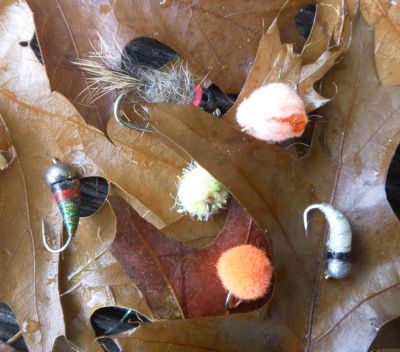 More rain is forecast for early next week which can only improve things. It is getting better but its still not quite bombs and glo-bug time yet. More rain is forecast for early next week which can only improve things. It is getting better but its still not quite bombs and glo-bug time yet.
One other thing that cropped up again this trip was the on going 1080 debate. Where ever I go my best mate Jake isn't far away and he loves to be with me on the river. I had noticed the "plastic feeders" nailed to some of the trees downriver and have since found out these contained cyanide not 1080. Those who either oppose or condone the use of this stuff rarely agree on much. But neither side dispute the fact that 1080 is deadly to dogs...so I kept him well away from the tracks below Reed and I was advised not to take him above Admirals because there had been an aeriel drop.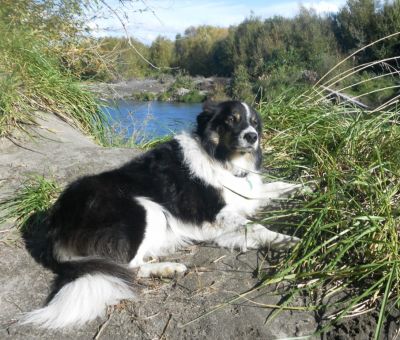
Compound 1080 as its sometimes called goes way back to World War Two where it was developed as a rat poison in Hitler's Nazi occupied territories. At one time they even considered using it as one of their killing agents during the Holocaust but it was deemed to dangerous to be handled by the concentration camp guards !!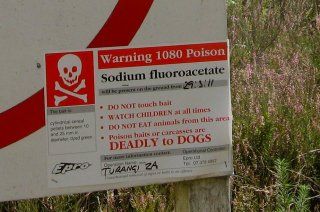
The formula eventually found its way to the USA where it was again used to control rats and later to poison coyotes and other predators on livestock ranches. But its introduction was linked to the death of eagles and all sorts of other animals...sound familiar? In 1972 after a huge public outcry the Nixon administration was forced to ban its use for livestock protection. This decision was reversed several years later when Ronald Reagan took over and allowed a limited application in poison laced collars worn by sheep.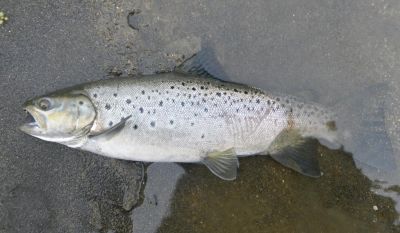
All of the known production of this deadly substance comes from a small factory in the town of Oxford Alabama operated by an outfit called the Tull Chemical Co. The current owner is a character called Charles Wigley who now controls the company first started by his grandfather in the 1950's. The "factory" which by all accounts looks more like a big shed is situated at the end of a residential street. Over the years it has been the subject of numerous complaints and investigations regarding the manufacturing process, transportation and security issues. In the mid-1980's it was closed while the government decided whether or not to allow production to continue in the middle of a town with over 15,000 inhabitants. Compound 1080 is after all the most toxic pesticide listed by the World Health Organisation.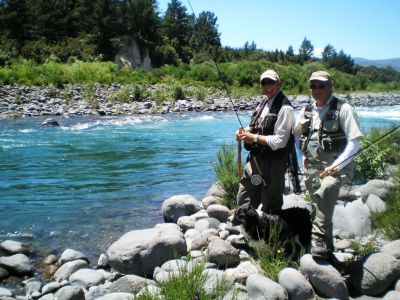 Unfortunately it was eventually allowed to re-open provided they implemented new guide lines on both safety and security. Ninety percent of the 1080 produced at this facility which equates to about four tonnes annually ends up in New Zealand. The chemical occurs naturally in some plants and is known as sodium fluoroacetate but the synthetic copy manufactured by the Tull Chemical Co. is sodium monofluoroacetate and is one of the most toxic substances known to man. Most other countries ban its use because its such an indiscriminate killer that has no known antidote. Despite the fact the rest of the world has turned its back on 1080 we still continue with helicopter drops scattering this poison all over the New Zealand country-side. You will probably have guessed that I'm very much against the use of 1080 in this way and think some of the idea's suggesting a subsidised trapping program sound a safer and more sensible option. But I'm told that overseas buyers are reluctant to buy possum fur that may be tainted with even minute traces of the stuff so who knows where we go from here. Unfortunately it was eventually allowed to re-open provided they implemented new guide lines on both safety and security. Ninety percent of the 1080 produced at this facility which equates to about four tonnes annually ends up in New Zealand. The chemical occurs naturally in some plants and is known as sodium fluoroacetate but the synthetic copy manufactured by the Tull Chemical Co. is sodium monofluoroacetate and is one of the most toxic substances known to man. Most other countries ban its use because its such an indiscriminate killer that has no known antidote. Despite the fact the rest of the world has turned its back on 1080 we still continue with helicopter drops scattering this poison all over the New Zealand country-side. You will probably have guessed that I'm very much against the use of 1080 in this way and think some of the idea's suggesting a subsidised trapping program sound a safer and more sensible option. But I'm told that overseas buyers are reluctant to buy possum fur that may be tainted with even minute traces of the stuff so who knows where we go from here.
In the meantime if your bringing your pets with you this coming weekend and intend passing through any of the baited zones follow the advice and keep them on a lead.
See you on the river
Mike
________________________________________ |
|
|
| Back to Top |
|
|
|
|
|
|
|